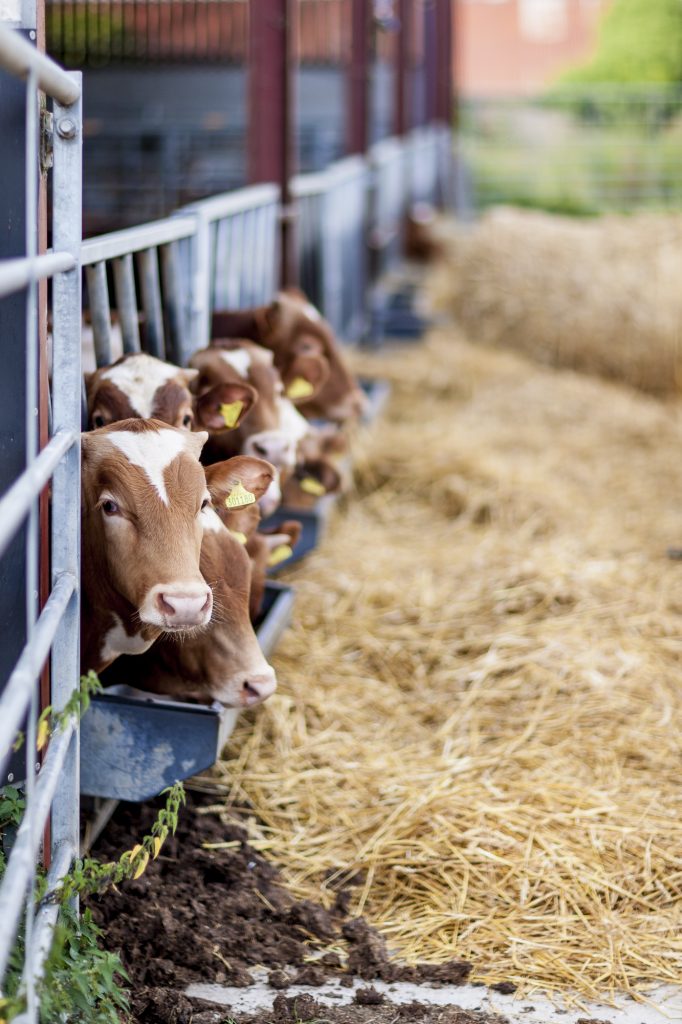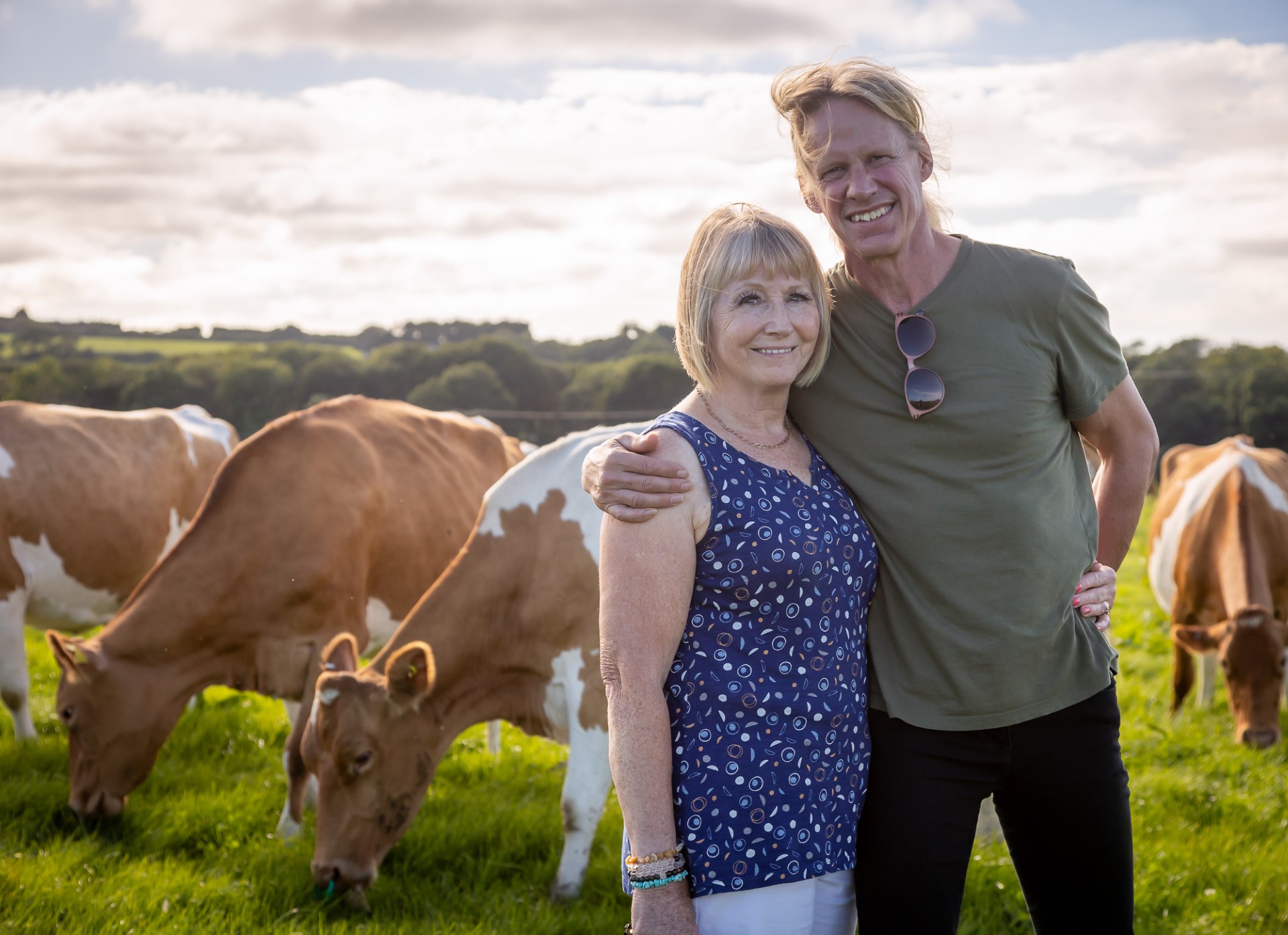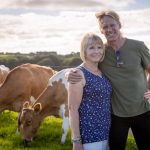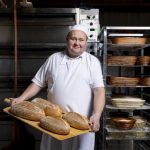This article first appeared in the July/August 2023 edition of Style of Wight magazine. Words by James Rayner. Photography by Julian Winslow.
Stretching from the rippling waters of Palmer’s Brook, south to Blacklands Lane and north to the old railway line that once ran from Ryde into Newport, is Briddlesford Farm. Set across 200 acres of lush green fields just outside Wootton, here the Griffin family’s 140-strong herd of white and caramel-coloured Guernsey cattle graze, whilst wheat and maize are cultivated nearby to feed them with in winter.
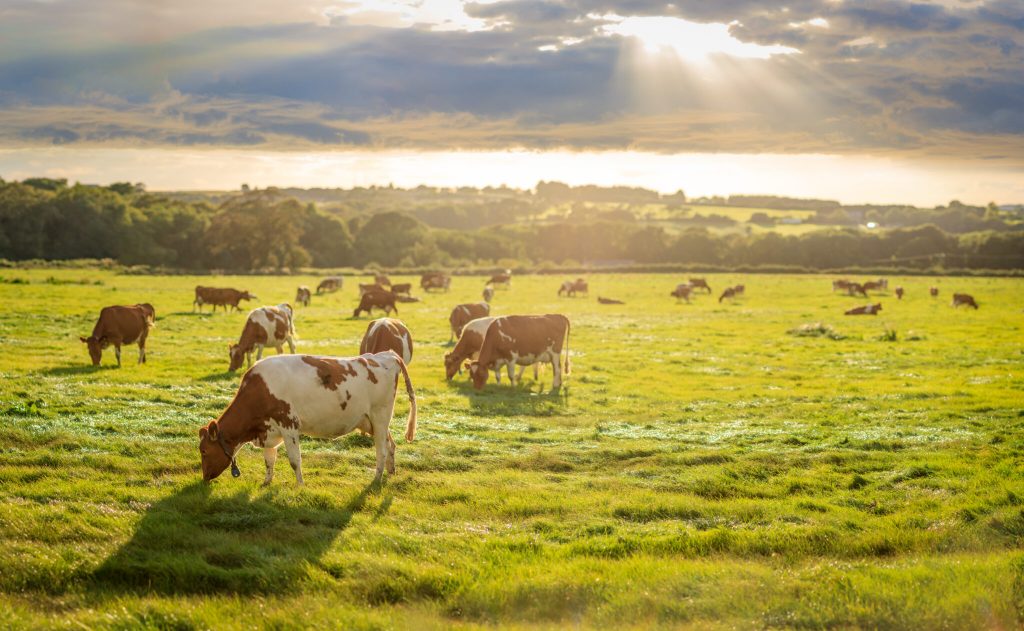
Today we’ve taken a seat in a snug corner of their on-site café to meet Paul Griffin and wife Chris, almost a hundred years to the day since Paul’s great-grandfather Charles walked his cows over the Downs from Grove Farm in Adgestone to take on the tenancy at Briddlesford. Whilst a milestone in itself, the family’s Isle of Wight agricultural roots stretch back even further, to Anne Peach, who married into the family in 1839 and sold butter around Shanklin until she’d made enough for husband Frank Griffin to afford his first farm tenancy.
Now, in 2023, we’re chatting in a tastefully converted former cowhouse, sipping freshly made coffee, topped up with a splash of Briddlesford milk. You’d never guess just how many unbelievably difficult challenges they’ve faced over the years, but they’re still here, still smiling and still just as passionate about their farm as ever.
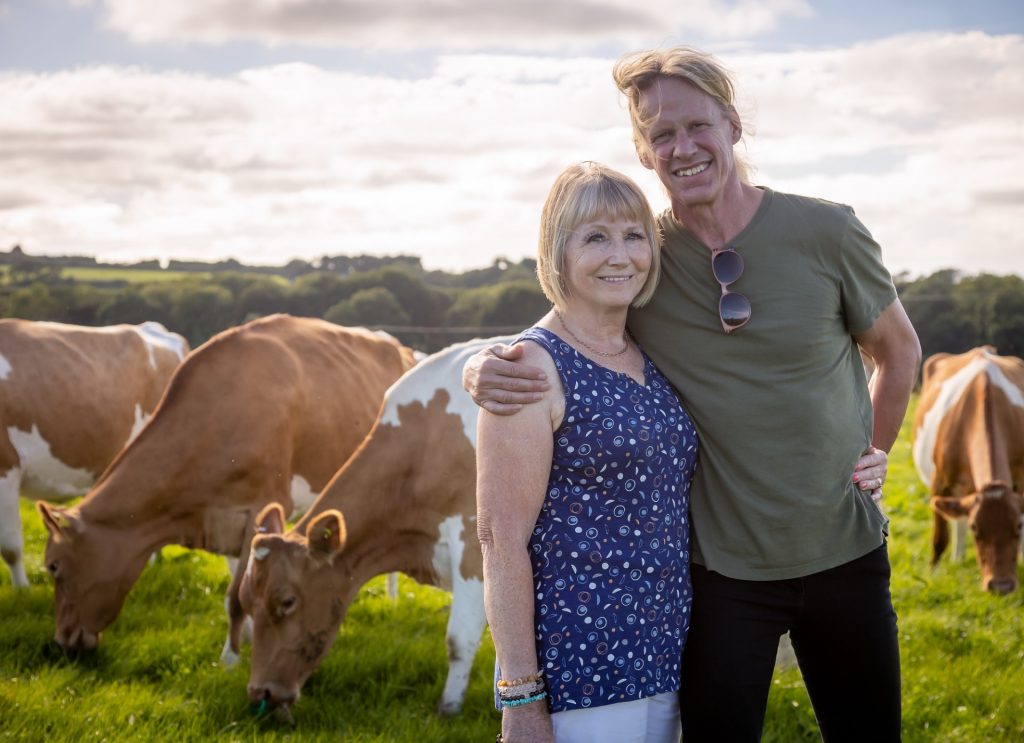
“I started milking at the age of ten,” Paul tells us, “using an old machine from the 1950s. We only had about 70 or 80 cows back then. As I grew up I decided to go to Agricultural College in Newcastle, where I learnt a lot but I’ve probably learnt more on the job since. Then, I wanted to go travelling so got myself to Australia and started looking for farm work. I began fruit picking and camped and hitchhiked my way down the east coast of Australia. I landed in New Zealand in autumn 1989 and started working at a dairy farm near Helensville, 19 days on, 2 days off, starting at 5 AM each morning.”
By the mid-90s, Paul was back at Briddlesford taking on more and more responsibility from his dad, which is when they faced their first big challenge. It was the age of ‘milk quotas’ and the EU’s Common Agricultural Policy was attempting to solve the problem of food surpluses by making farmers scale back their production by 20%. If they wanted to produce more volume, they had to buy more quota, which became an expensive necessity for the family over the following 10 years.
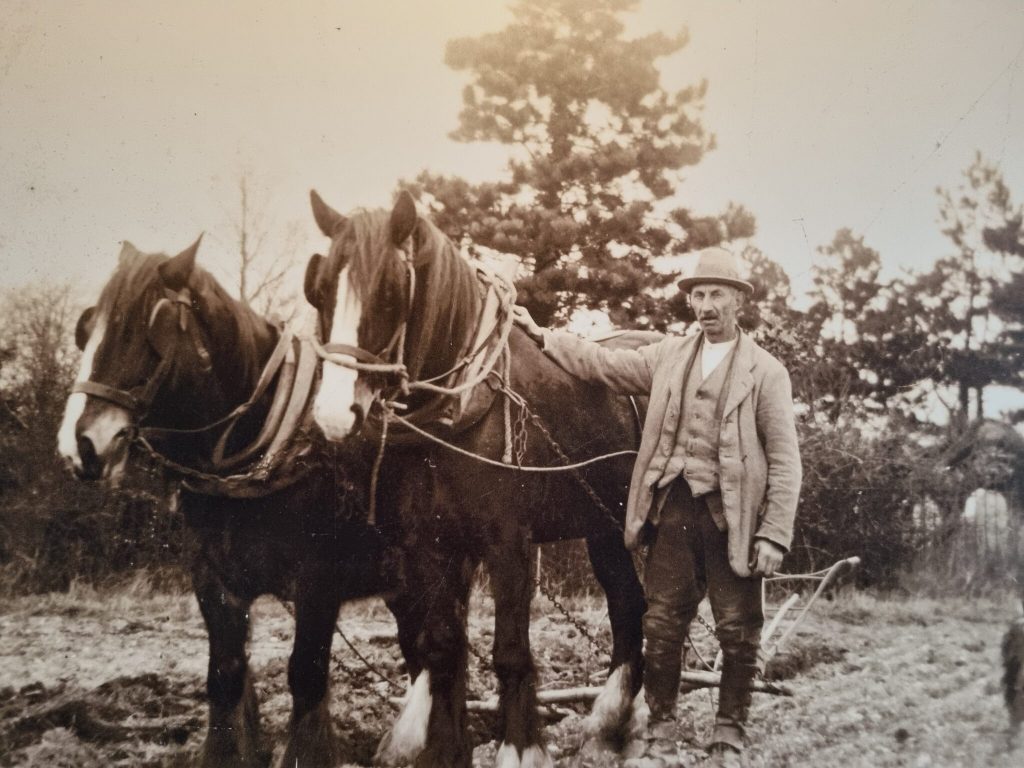
Meanwhile, Paul increased the herd, made the farm more efficient and built a new state-of-the-art ‘cow palace’ with facilities to milk, feed and sleep up to 130 cows. However, the milk price soon began to fall, and the herd struggled to remain profitable. “We realised we needed to get control of the milk price, and to do that, we needed to reconnect with the local market. In 2005, the old dairy became a farm shop, run by sister Louise, selling our milk and other local produce, and it turned out to be an instant success. Building on that, we then turned the empty cow housing into our Bluebells Café. Luckily my wife Chris, who used to be a teacher was looking for a career change, so she took the reins of the café and started doing farm walks for children and educational tours too”.
The couple first met at the Three Crowns in Cowes when Paul was in a band – “the worst thing that ever happened to her” he jokes. They processed milk on their wedding day and had an escaped bull to contend with on their wedding night. The pair then had a three-day honeymoon in Bath (as Paul wanted to get back for the hay-making) but we hear that a proper honeymoon is still on the cards at some point in the future.
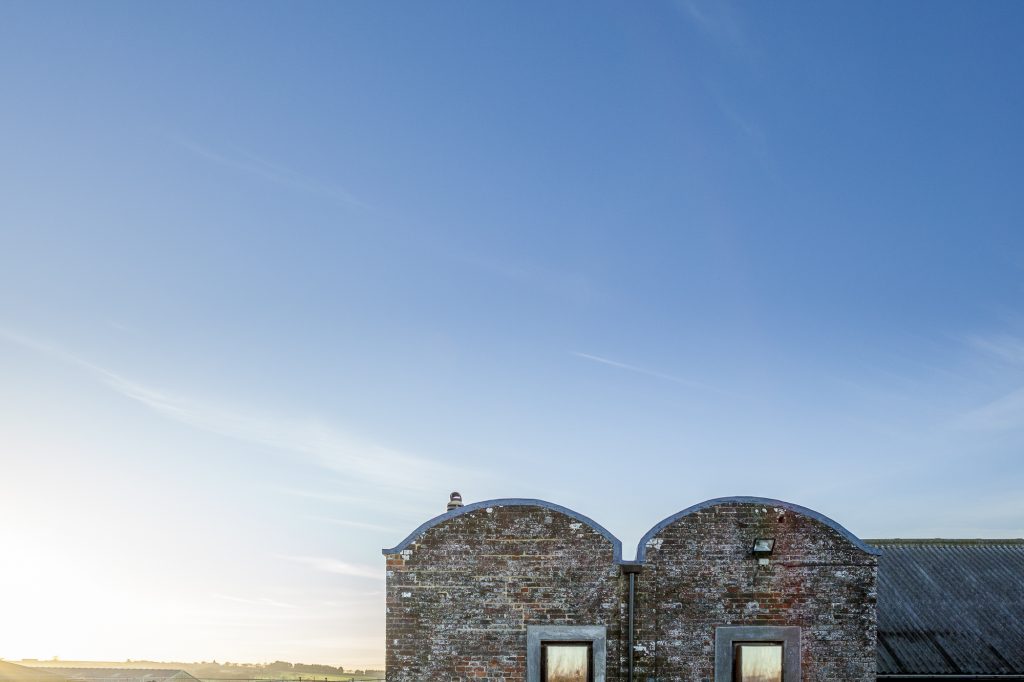
Briddlesford now produces 800,000 litres of milk a year, all of which is processed on-site in their solar-panel-topped milk factory, built in 2012. “That was another challenge” Paul explains, “as the banks weren’t very sympathetic. We built it but couldn’t afford to fit it out so it stood empty for three years! We eventually got finance from private investors and some good friends on the Island. After we built it though, the milk wholesalers wouldn’t touch us. They wouldn’t even take a litre! The first winter was horrendous, we thought we’d lose everything but luckily our cream was picked up by Medina Food Service and WightLink started buying our semi-skimmed milk. Now we sell every drop of our milk direct and it has secured the herd long into the future”.
Aside from the milk and cream, Briddlesford has also started to make a name for itself with its award-winning range of artisan cheeses. From a silky smooth Gouda (Paul’s favourite), to a nutty Briddlesford Red and a light, crumbly ‘Fetter’. Amongst their fans, is the TV chef James Martin, who has used their cheddar in a recipe for Isle of Wight Double-Bake Cheese Soufflés. They’ve also found favour with high-end British burger chain Honest Burgers, who put on specials that include crisp, fried slices of Briddlesford Halloumi. “Their last order was for 1.8 tonnes” Chris tells us, “and Charlie and Gary were working twenty-hour days in the dairy to fulfil it!”.
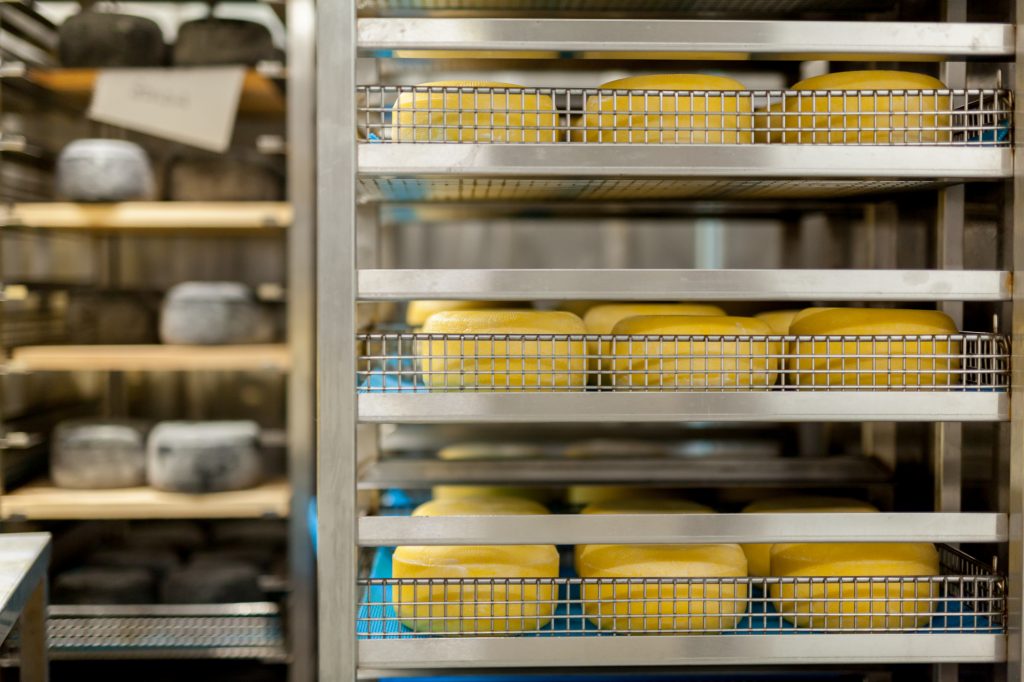
As they get ready to celebrate their centenary, the farm has also planned a ‘Sustainability September’ to build on all the good eco-friendly moves they’ve made already. From cutting hedges once every two years (to give biannual wildflowers a chance to flourish), to adding biodiversity buffer strips and swapping some of their packaging from plastic to glass or biodegradable materials instead. They now supply thousands of customers with doorstep deliveries of milk in reusable glass bottles too, delivered and collected by Adam Burrows of the Island Dairy Service. Each bottle is then returned to the farm, washed, sterilised and refilled for the next time.
Just before we leave, there’s one more thing Chris wants to show us in their farm shop butchery, a brand new (and very sustainable) product – ex-dairy Guernsey beef. Traditionally considered tough and usually wasted, this type of meat is starting to become popular amongst chefs such as Tom Fahey at The Terrace who prize it for its rich flavour when it’s thinly sliced and slow-cooked. Coming from the farm’s dairy cows once they’ve reached the end of their milk-producing life, it’s an efficient use of what is essentially a by-product, plus the cows get a few extra months out in the pastures too. “We know how important it is for farms to work in balance with the environment,” Chris tells us, “and we’re very proud of everything we’ve achieved so far”.
